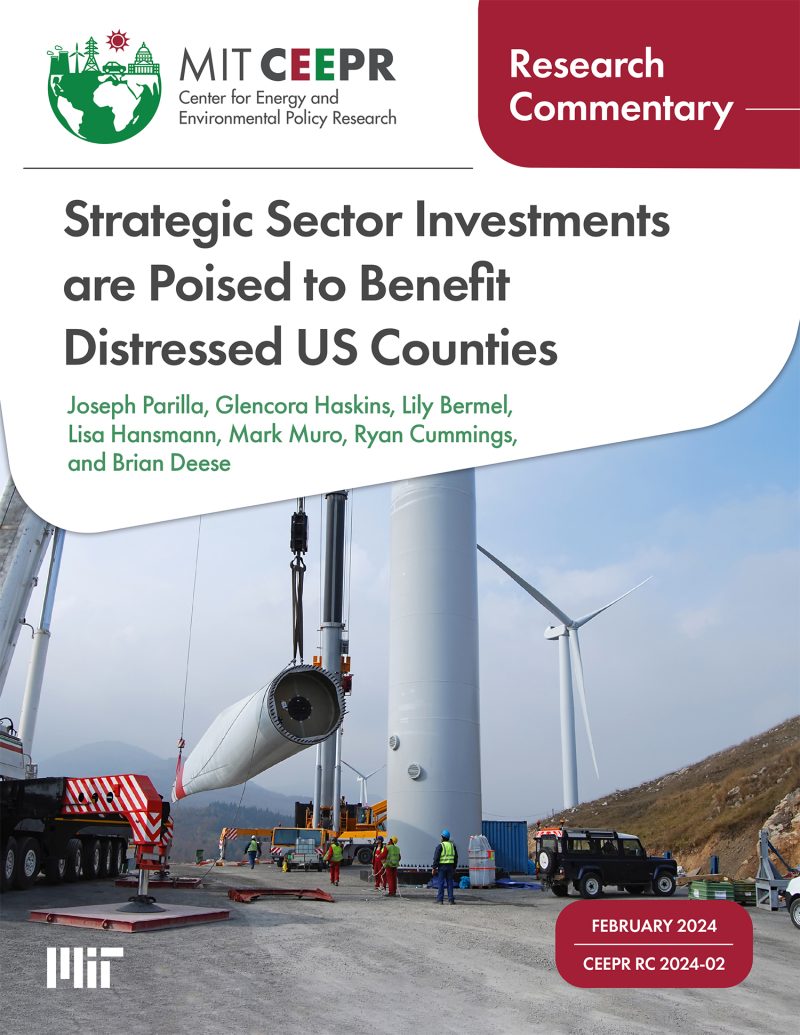Research Commentary: Strategic Sector Investments are Poised to Benefit Distressed US Counties
Joseph Parilla, Glencora Haskins, Lily Bermel, Lisa Hansmann, Mark Muro, Ryan Cummings, and Brian Deese
February 2024
Spurred in part by three significant pieces of federal legislation, since 2021, the United States has experienced an investment surge in “strategic sectors,” defined as clean energy, semiconductors and electronics, biomanufacturing, and other advanced industries. So far, economically distressed counties are receiving a disproportionate share of that investment surge relative to their current share of the economy. With comparatively low prime-age employment rates and median household incomes, these counties account for about 8% of national GDP but have received 16% of announced strategic sector investments since 2021. Strategic sector investments are much more likely than private investment overall to target economically distressed counties, relative to recent years and the 2010-2020 recovery period—suggesting a significant departure from geographic patterns of prior investment. Distressed counties that have received a strategic sector investment currently have relatively high shares of employment in advanced industries—suggesting that such foundations continue to matter to private investors. Smaller regions (defined as “micropolitan areas”) account for about 25% of the nation’s employment-distressed population, but have secured 50% of all strategic sector investments going to distressed counties since 2021. Acknowledging this early progress, the path from private investment into broadly shared and inclusive economic opportunity is not automatic or guaranteed—it requires intentional strategies to connect local workers and businesses to these new investments.
Acknowledgment
This commentary was published in partnership with Brookings Metro and the MIT Center for Energy and Environmental Policy Research.



